In this post, we delve into:
What are the sustainable homes?
Sustainable homes, also known as housing, ecological or green houses, are those designed and built with the goal of reducing their environmental impact both in the process of construction as well as in their daily functioning.
These houses are based on the principles of energy efficiency, use of renewable materials and recyclables, as well as in the incorporation of renewable energy systems to reduce their dependence on non-renewable energy sources.
In a world increasingly aware of the importance of taking care of the environment, sustainable homes are becoming an increasingly popular option for those who wish to live a more eco-friendly and responsible.
In this complete guide that we have created from Living Kits, we will explore everything you need to know about sustainable homesfrom what they are up to the benefits they offer, the different types available, the materials used for construction, renewable energy systems, energy efficiency in the home, the recycling and waste management, the certification of sustainable homes, cases of success, aids and subsidies available, as well as frequently asked questions to clarify any questions you may have.
Importance of sustainable construction
Sustainable construction is crucial in the fight against climate change and the degradation of the environment. The construction industry is one of the largest consumers of natural resources and generation of waste, so that adopting sustainable practices in this sector can have a significant impact on the reduction of the global ecological footprint.
In addition, sustainable homes offer benefits to both the homeowners and the society in generalas we will see below.
Benefits of living in a sustainable house
To live in a sustainable house carries a number of benefits to both the homeowners and the environment. Some of the most notable benefits include:
- Saving energy and costs: Sustainable homes are designed to be highly efficient in energy use, resulting in utility bills, lower to the owners over time.
- Less environmental impact: The use of building materials are sustainable and renewable energy systems, sustainable homes reduce their carbon footprint and contribute to the conservation of natural resources.
- Comfort and quality of life: Sustainable homes tend to have better indoor air quality, a more constant temperature and humidity levels are most appropriate, which creates an environment more healthy and comfortable for their inhabitants.
- Property valuation: To increase the awareness about the importance of sustainability, sustainable homes tend to increase their value in the real estate market, which may result in a better long-term investment.
In the following sections, we'll dive deep into different aspects of sustainable homes, from the types available to construction materials, renewable energy systems, energy efficiency, waste management, certifications, and more.
¡Keep reading to discover everything you need to know about this exciting topic!
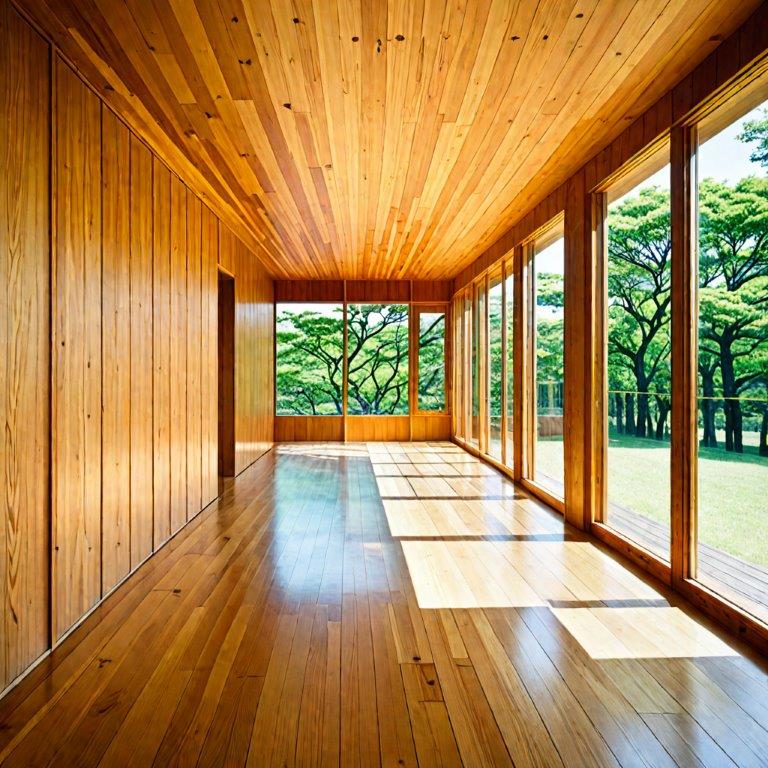
Types of sustainable homes
Passive houses
Passive houses are a type of housing designed to maintain a comfortable temperature in your interior without the need for active systems of heating or cooling. These houses are based on the principles of bioclimatic design and use techniques such as the use of sunlight, the use of insulating materials of high quality and the minimization of thermal bridges to minimize heat loss in winter and overheating in the summer.
Houses bioclimatic
The houses bioclimatic are those that take advantage of local weather conditions to achieve a thermal comfort is optimal in its interior during the whole year. These houses are designed taking into account factors such as the solar orientation, the shape of the building, the location of windows and doors, and the selection of materials of construction suitable to maximize energy efficiency and minimize the consumption of resources.
Prefabricated homes, sustainable
The prefabricated houses sustainable are those that are constructed in the factory using environmentally friendly materials and production methods, efficient, and then assembled at the place of destination. These houses tend to be faster to build and generate less waste than traditional construction, which makes them an attractive option for those seeking to reduce the environmental impact of your home.
Other types of sustainable homes
In addition to the types mentioned above, there are many other ways to design and build the sustainable homes, from houses made with cargo containers recycled to homes built with natural materials such as earth, straw or adobe. The key to designing a sustainable house is to use strategies that minimize the consumption of resources, maximize energy efficiency and minimises the environmental impact.
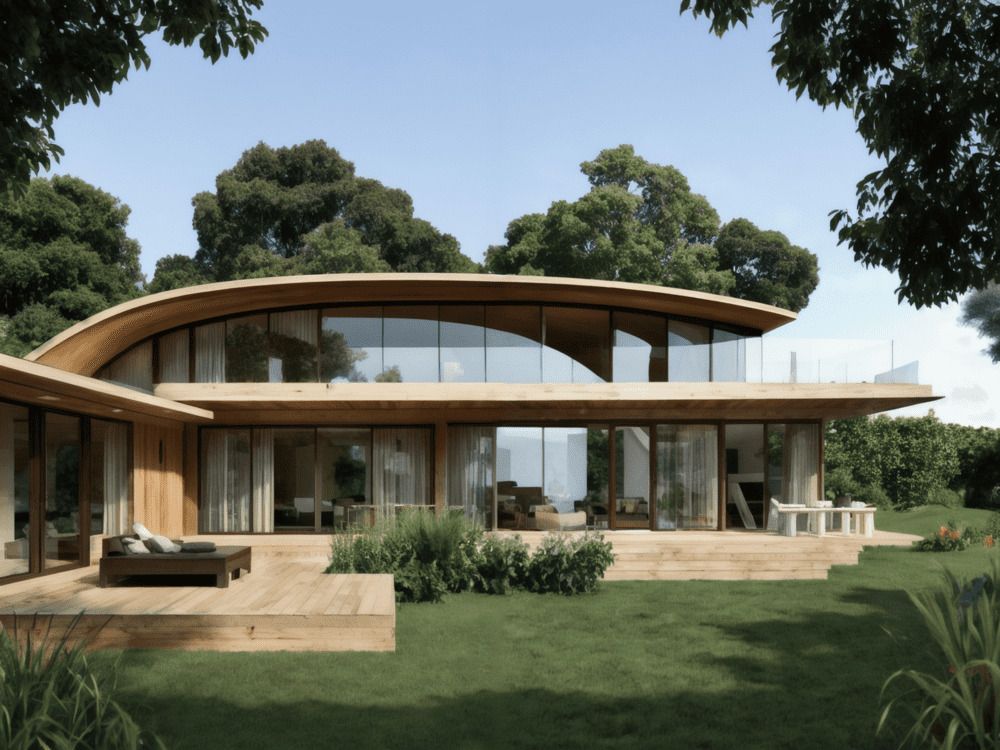
What requirements are needed to build a sustainable house?
To build a house sustainable, it is important to take into account a number of requirements and considerations that will ensure their energy efficiency, their low environmental impact and comfort to the occupants. Some of the main requirements to build a sustainable house are the following:
- Bioclimatic design: The design of the house should take the maximum advantage of the available natural resources, such as sunlight, natural ventilation and the use of local climatic conditions. This includes the proper orientation of the housing, the strategic location of windows and openings to promote the entry of light and heat in the winter and blocking in the summer, and the use of building materials with thermal properties suitable.
- Energy efficiency: The house must be designed and constructed with the measures to reduce the consumption of energy, both in its construction phase as well as in their daily functioning. This includes the installation of systems of thermal insulation in walls, ceilings and floors, the selection of construction materials with low thermal conductivity, the addition of heating and cooling systems efficient, and the use of appliances and equipment with energy label of high efficiency.
- Use of environmentally friendly materials: Materials should be used, building sustainable and respectful with the environment, preferably from a local source, and with a low content of toxic substances. This includes materials such as certified wood, bamboo, raw land, cork, adobe bricks, recycled glass, and building materials with low environmental impact and carbon footprint reduced.
- Management resources: The house should be designed to minimize the consumption of natural resources and maximize the efficiency of their use. This includes the installation of systems for capture and reuse of rainwater, the implementation of systems of recycling and composting of organic waste, and the choice of materials and technologies that reduce the generation of waste during the construction and use of housing.
- Use of renewable energies: Must incorporate renewable energy systems to meet the energy needs of the home of sustainable and respectful with the environment. This includes the installation of solar panels pv for electricity generation, systems of aerothermal or geothermal energy for heating and cooling, and solar thermal systems for the production of sanitary hot water.
- Certifications of sustainability: Obtain certifications of sustainability recognized, such as Passivhaus, LEED or BREEAM, you can help ensure that the home meets the highest standards in terms of energy efficiency, indoor environmental quality, and global sustainability. These certifications can provide guidance and direction throughout the process of construction, as well as recognition and value added to the property once completed.
Building materials sustainable
Wood
Wood is one of the building materials more sustainably available, as it is renewable, biodegradable and has a carbon footprint relatively low in comparison with other materials such as steel or concrete. In addition, the wood has excellent thermal insulation properties and can help reduce the energy demand for heating and cooling of a home.
Looking for certified wood FSC (Forest Stewardship Council) to ensure sustainable management practices foresta
Bamboo
Bamboo is another material of construction sustainable widely used in many parts of the world. It is fast growing, tough and durable, which makes it ideal for use in the construction of housing. In addition, bamboo is an excellent source of biomass and can help to reduce deforestation by providing a sustainable alternative to wood from natural forests.
Raw land
The earth raw, also known as adobe or rammed-earth walls, is one of the materials of construction oldest and sustainable exist. It is composed mainly of land, water, and organic materials such as straw or manure, and is used to build the walls thick and strong that offer excellent properties of thermal and acoustic insulation. In addition, the earth raw is a local material and abundant in many regions of the world, which makes it a cost-effective and sustainable for the construction of housing.
Other eco-friendly materials
Besides of wood, bamboo and raw land, there are many other sustainable building products available, such as cork, hemp, recycling of demolition materials, and the use of products of biological origin or mineral. These materials offer a wide range of options to design and build the sustainable homes that are resilient, efficient, and respectful with the environment.
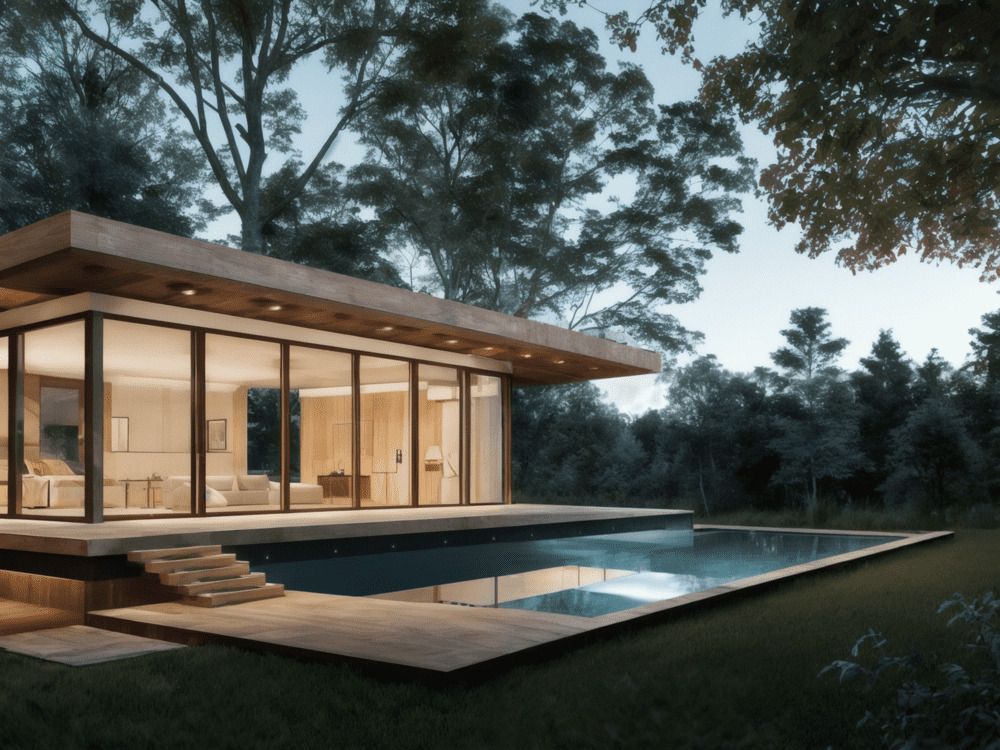
Renewable energy systems
Solar panels
Solar panels are one of the most common and effective of generating renewable energy in a sustainable house. These devices capture the sun's energy and convert it into electricity which can be used to feed the various organs and systems of a house. Solar panels can be installed on the roof or on the ground, and its size and capacity can be adapted to the specific needs of each home.
Aerothermal
Aerothermal is a heating and cooling system that uses the energy contained in the outside air to heat the interior of a dwelling efficiently and sustainably. This system takes advantage of the power of the air through a heat pump that extracts heat from the outside in the winter to heat the home, and exhausts it to the outside in the summer to cool it. Aerothermal is an option particularly interesting in areas with mild climates and temperate.
Geothermal energy
Geothermal energy is another heating and cooling system that uses the energy stored in the basement to heat a home efficiently and sustainably. This system uses the constant temperature of the soil at a certain depth to provide heating in winter and cooling in summer. Geothermal energy requires the installation of a heat exchange system buried in the ground, which can make your initial installation is more expensive than other systems, but it offers a high degree of efficiency and long-term reliability.
Other renewable energy systems
In addition to the systems mentioned above, there are many other ways to generate renewable energy in a sustainable housing, such as wind power, hydropower, tidal power and biomass. These systems can be used as a complementary or independent, according to the specific conditions of each location and the energy needs of every home.
Energy efficiency in the home
Thermal insulation and water tightness
The optimization of insulation and water resistance plays an essential role in the construction of a sustainable house. This is due to the fact that these measures contribute significantly to improve the energy efficiency of the home, thereby reducing their consumption of resources and minimizing its environmental impact. A good thermal insulation in walls, ceilings, floors and windows help to reduce heat losses in winter and to maintain a comfortable temperature in the interior of the home.
This means not only a reduction in the need for heating, but also less use of air-conditioning systems, resulting in lower energy consumption and a decrease of the greenhouse gas emissions associated with the generation of energy. In addition, a house well insulated and sealed offers a better thermal comfort to its inhabitants, avoiding the streams of cold or hot air and providing an indoor environment more stable and enjoyable in all seasons of the year.
This not only improves the quality of life of the occupants, but also contributes to the health and well-being in the home.
Here are some examples of how to achieve the optimization of the insulation and tightness in the construction of a sustainable house:
- High-quality thermal insulation: Use thermal insulation materials efficient in walls, ceilings and floors, such as rock wool, cellulose, the expanded polystyrene (EPS) or polyurethane. These materials help to reduce the transfer of heat between the interior and the exterior of the home, while maintaining an internal temperature comfortable and reducing the need for heating and cooling.
- Double glazing: Install windows with double or triple glazing and frames made of PVC or aluminum with a thermal bridge break. This helps to minimize heat loss through the windows and to improve the thermal comfort in the interior of the house.
- Sealing of joints and cracks: Use sealing materials of high quality, such as silicone or foam, expanding to seal all joints, cracks and gaps between building elements. This prevents the entry of cold or warm air from the outside and helps to maintain the water tightness of the building.
- Installation of vapor barriers: Put vapor barrier on walls and ceilings to avoid the accumulation of moisture in the interior of the home and ensuring an internal environment healthy and comfortable.
- Use of ventilation systems controlled: Install systems of controlled mechanical ventilation with heat recovery to renew the indoor air efficiently without compromising energy efficiency or tightness of the building.
- Application of construction techniques passive: To design the housing with construction techniques passive, as the proper guidance, the compact design, the use of materials and thermal optimization of the thermal mass, to maximize the energy efficiency and thermal comfort without the need for active systems of air conditioning.
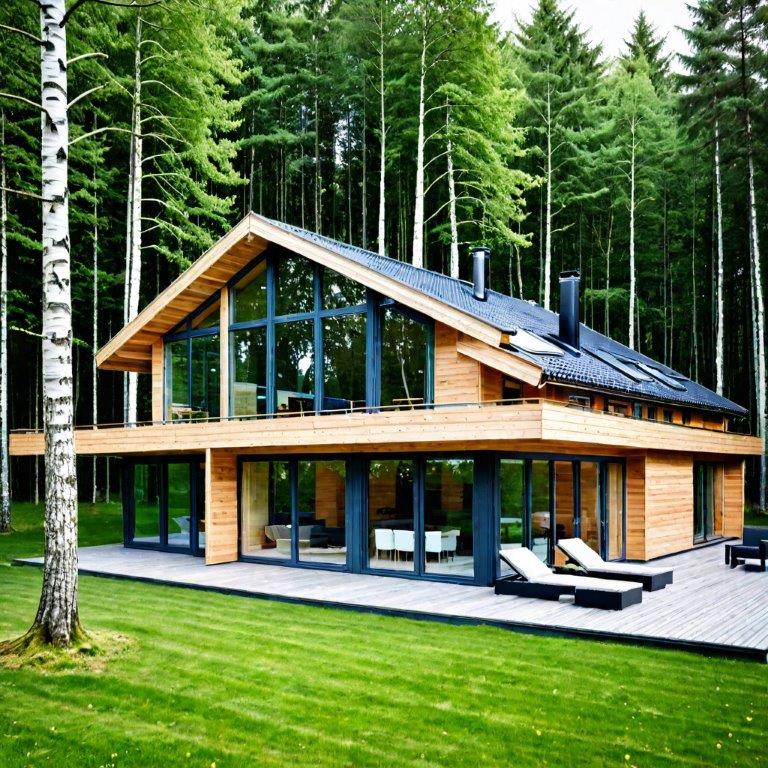
LED lighting
The use of LED lighting in the construction of a sustainable house is a choice key that has a significant impact on the energy efficiency and the reduction of the consumption of resources. LED bulbs consume significantly less power than incandescent bulbs and compact fluorescent, which contributes directly to the reduction of electricity consumption in the home. This energy savings will not only be reflected in a decrease of the spending in the bill, but also in a reduction of the carbon footprint associated with the generation of electricity.
In addition, the LED bulbs have a much longer lifespan than traditional bulbs, which means that they require fewer replacements and less waste generated. This durability contributes to the conservation of the natural resources and reducing pollution by reducing the need to manufacture and dispose of light bulbs frequently.
Another important benefit of using LED lighting is its ability to emit less heat than incandescent bulbs, and fluorescent. This contributes to reduce the thermal load on the inside of the housing, which in turn decreases the need to use cooling systems during the warmer months. This reduction in the energy consumption for air-conditioning improves the thermal comfort in the home and contributes to greater energy savings.
The flexibility in the design of lighting is another important aspect of LED technology. The LED bulbs are available in a wide variety of shapes, sizes, colors and intensities, which offers a greater versatility in the design of lighting the home. This allows you to create custom room and adapted to the specific needs of each space, without compromising energy efficiency or the quality of the lighting.
Finally, the LED bulbs are compatible with control and automation systems-lightingas motion sensors, timers, and systems smart home automation systems. This enables you to optimize the use of the lighting in the apartment, turning off automatically lights when not in use, and adjusting the light intensity according to the needs and preferences of the occupants. This ability of control helps to maximize energy savings and to create an environment more comfortable and functional in the home.
Efficient appliances
The use of energy efficient appliances in the construction of a sustainable house it is essential to reduce energy consumption and promote a style of life more respectful with the environment. These appliances are designed to use less energy compared to conventional models, which translates into a significant reduction of the electricity consumption in the home. This lower consumption not only helps to reduce costs on the energy bill, but also helps to reduce the carbon footprint associated with the generation of electricity.
In addition to reducing the energy consumption, the energy efficient appliances also contribute to the conservation of natural resources finitelike oil, natural gas, and coal, used for the generation of electricity. To optimize the use of these resources, it promotes a model of development that is more sustainable and minimize the environmental impact associated with their extraction, transport and processing.
Another important benefit of the use of energy efficient appliances is its ability to reduce the emissions of greenhouse gases, such as carbon dioxide (CO2), associated with the generation of electricity. When you use less energy, reducing the amount of polluting gases released into the atmosphere, which contributes to mitigate climate change and protect the environment.
The energy efficient appliances tend to have a higher durability and quality in comparison with the conventional models, which means that they require less maintenance and have a longer useful life. This reduces the need to replace them frequently, thereby reducing the generation of waste and to contribute to the conservation of natural resources.
In addition, many energy efficient appliances comply with standards and certifications for energy efficiency established by national and international organizations. This provides an additional guarantee of performance and quality, promoting its adoption in the market and fostering the construction of homes that are more sustainable and respectful with the environment.
Habits of responsible consumption
In addition to using equipment and systems efficient, it is also important to adopt habits of responsible consumption in the home to minimize the waste of energy and resources.
This includes turning off appliances when not in use, use water and electricity in a conscious manner, recycle and reuse materials whenever possible, and choose products and services that are respectful with the environment. For example:
- Turn off the lights and unplug appliances: Get used to turning off the lights when you leave a room and unplug appliances when not in use helps to reduce the energy consumption in the home.
- Use energy efficient appliances: Opt for appliances with labels of energy efficiency or higher and use them efficiently, selecting, washing programs, and at the correct temperature, helps to save energy and reduce costs in the electric bill.
- Practice recycling: Separate the waste into containers destined for recycling, such as paper, plastic, glass and organic matter, helps to reduce the amount of waste going to landfills and contributes to the conservation of natural resources.
- Reduce the consumption of water: Adopting habits of efficient use of water, such as turning off the faucet while brushing their teeth, repair water leaks and collect rain water to water the plants, help preserve this vital resource and to reduce the environmental impact of their extraction and processing.
- Choose sustainable products: Choose products durable, reusable and made of sustainable materials, like organic food, biodegradable cleaning products and building materials eco-friendly, promotes business practices more responsible and contributes to reduce the environmental impact of the production and disposal of consumer products.
- Minimize waste: Reduce food waste by planning purchases, storing proper food and taking the maximum advantage of the resources available in the kitchen helps to reduce the amount of organic waste and save money in the purchase of food.
- Optimize the transport: Use sustainable modes of transport, such as walking, riding a bike or use public transport instead of driving a private vehicle, it helps to reduce greenhouse gas emissions and reduce the carbon footprint associated with the displacement.
Here I leave a post in which we took a set of keys to save light at home

Recycling and waste management
Reduce, reuse and recycle
The rule of the three r (reduce, reuse and recycle) is fundamental in the management of waste in a sustainable house. Reduce the consumption of disposable products, reusing materials wherever possible and recycle waste that cannot be avoided are key practices to minimize the environmental impact of a housing and contribute to the conservation of natural resources.
- Reduce: This first “erre” focuses on reducing the production of waste at its source. Some practical examples are:
- Buy less: Reducing our consumption, much energy as material goods, we contribute to lessen the problem. We can apply certain criteria to choose what we buy, how to check the place of origin and to give priority to products made close to us.
- Minimize the use of plastics: Replace plastic bags for reusable bags and reduce the use of plastics in general.
- Reuse: The second “erre” encourages us to extend the useful life of the products before discarding them. Some examples are:
- Repair before replacing: Before disposing of a product, let us look for the way to repair it. If this is not possible, consider giving it another use before the end of their life.
- Creative reuse: We can transform objects into disuse in something new. For example, making musical instruments from recycled materials or recycling bottle stoppers.
- Recycle: The third “erre” refers to the transformation of waste into new resources. Some key aspects are:
- Separate the waste: Sort the materials for easy recycling.
- Recycle paper, glass and plastic: To contribute to the life cycle of these materials.
Composting
Composting is an effective way of recycling organic waste and turn it into a natural fertilizer for the garden or the garden. By composting, food waste, grass clippings and other organic materials decompose in a controlled manner to produce compost, a material rich in nutrients that can improve soil quality and promote the growth of healthy plants.
Responsible management of waste
In addition to reducing, reusing and recycling, it is also important to adopt a responsible management of waste in the home. This includes separate the waste into different bins according to their type (organic, paper, glass, plastic, etc), use products that are biodegradable and environmentally friendly, and participate in programs of selective collection and recycling of waste in the community.
Certification of sustainable homes
Standards of sustainable construction
There are several standards and certifications available to evaluate and certify the sustainability of a home. Some of the most well-known include LEED (Leadership in Energy and Environmental Design), BREEAM (Method of Environmental Assessment of Buildings) and Passivhaus Standard (Construction Passive). These standards establish specific criteria in areas such as energy efficiency, indoor air quality, the use of sustainable materials and waste management, among others.
Energy performance certificates
Energy performance certificates are official documents that evaluate and rate the energy consumption of a building in function of its design, construction and equipment. These certificates provide information on the energy efficiency of a home and suggest measures to improve their energy performance and reduce their environmental impact.
Other types of certification
In addition to the standards of sustainable construction and energy performance certificates, there are also other forms of certification available to assess and recognize the sustainability of a dwelling, such as eco-labels, the labels of environmental quality and certifications specific to construction materials and renewable energy systems.
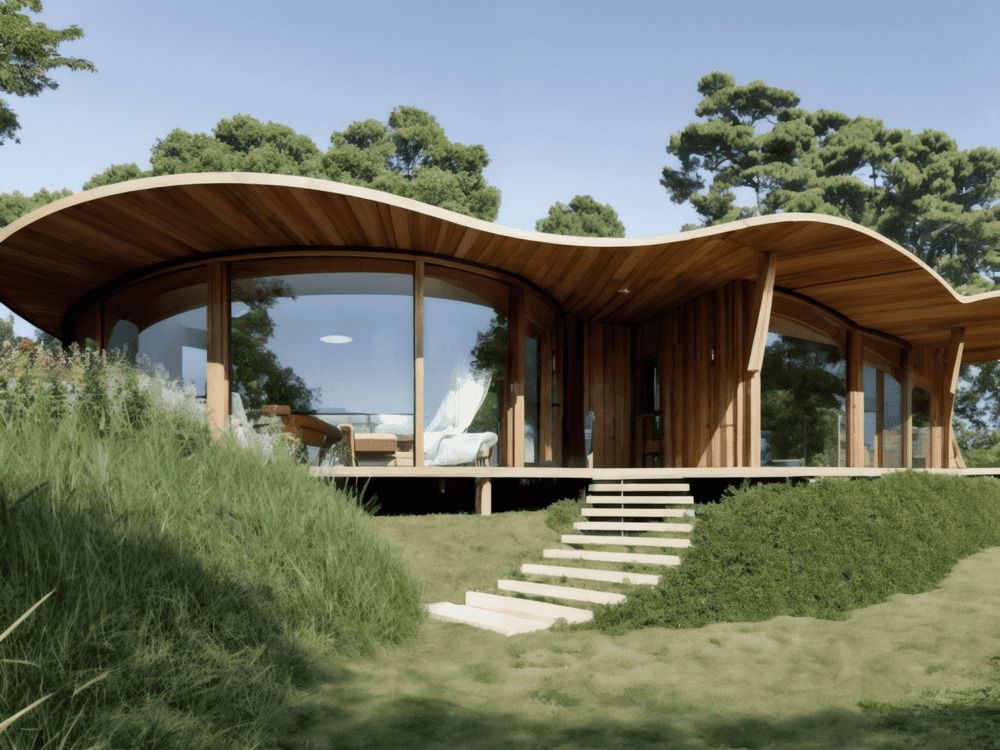
Successful cases of sustainable homes
Examples of sustainable homes around the world
In all the world, there are numerous examples of sustainable homes that demonstrate the possibilities and benefits of living in a more ecological and responsible. From passive houses in Germany until houses bioclimatic in Spain, passing by houses and prefabricated sustainable in the united States and the homes of raw land in Africa, more and more people are choosing to build and inhabit houses that respect the environment and promote a style of life more sustainable.
Features and benefits of these houses
Examples of sustainable houses stand out for their innovative design, energy efficiency, use of environmentally friendly materials, and its harmonious integration with the natural environment. These homes offer a number of benefits to both its inhabitants and the environment, such as lower energy consumption, a better quality of life, reduced environmental impact and, in many cases, a cost savings in the long term.
- Casa GG (Barcelona)
- This house in bioclimatic, designed by Alventosa Morell Arquitectes, has a nearly zero-energy consumption. We achieved a reduction of the 76,77% energy consumption.
- Home Bunyesc (Arboretum, Lleida)
- A house that combines traditional architecture with sustainable systems. It uses local materials and techniques of green building.
- Housing Assyce-Ecoholísticas (Moraleda de Zafayona, Granada)
- An example of a green home that integrates renewable energy systems and sustainable materials.
- Villa Ana (Santiago de Compostela)
- A passive house that maximizes energy efficiency and minimizes environmental footprint.
- Housing geodesic in Jumilla (Murcia Region)
- A unique construction that uses the geodesic to optimize the use of materials and energy.
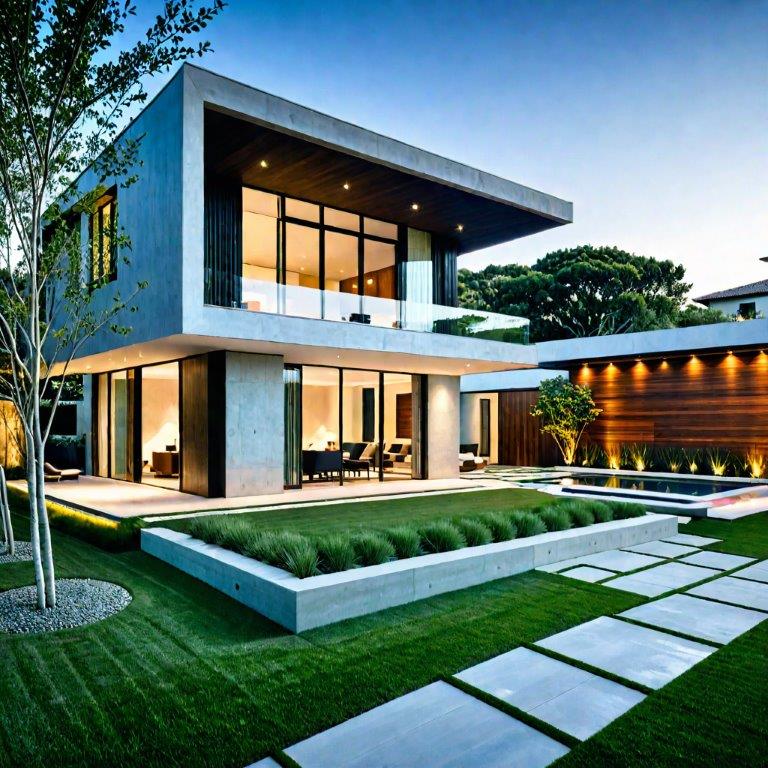
Grants and subsidies for sustainable homes
Assistance programs for the construction of sustainable homes
In many countries, there are government programmes and non-governmental organizations that provide grants and subsidies for the construction of sustainable homes. These aids may include low interest financing, tax incentives, subsidies for the installation of renewable energy systems, and technical assistance and training in sustainable building practices.
Assistance programs may vary by country and region, so it is important to investigate and understand the options available in each case.
In Spain, there are several grants and grants available for the construction of houses, eco-friendly and sustainable. Such assistance may come from both the central government as the autonomous and local administrations, as well as non-governmental organizations and the private entities. Some of the aid programs more highlights include:
- Program of Aid for the Energy Rehabilitation of Buildings (PAREER)This program, managed by the Institute for the Diversification and Saving of Energy (IDAE), provides financial assistance for the realization of works of improvement of energy efficiency in existing buildings, including the installation of renewable energy systems and the improvement of the thermal insulation.
- Housing Plan State: The State Housing Plan provides different lines of support for the promotion and rehabilitation of housing, some of which may be used for the construction of housing, ecological and sustainable. These aids may vary according to the specific conditions of each call and for each autonomous community.
- Aids and subsidies, and local: Many autonomous communities and cities offer grants and subsidies that are specific to the construction of sustainable housing and the use of eco-friendly materials. These aids may include low interest financing, tax credits, fee waivers, and other economic incentives.
- Funding programs green: Some financial institutions offer financial products and services specific to the construction of housing eco-friendly and sustainable, as loans to green, sustainable mortgages and lines of credit for the installation of renewable energy systems.
According to data from July, 2023, only 11 Spanish banks to offer green mortgages. Among them is Banco Santander, BBVA, CaixaBank, Santander Consumer Finance, Triodos Bank, Banco Mediolanum, Bankinter, Liberbank, Ibercaja, Abanca and Cajamar. These data contrast with the 27 institutions that granted the green mortgages in Sweden, the 22 of Denmark, the 21 of the Netherlands or the 20 of the France.
- Grants for the installation of renewable energy systems: In addition to the grants for the construction of housing environmentally-friendly, there are also grants available for the installation of renewable energy systems, such as photovoltaic solar panels, aerothermal, geothermal, and biomass. These grants can be managed by public agencies, private entities or businesses of energy services.
Requirements to obtain such aid
The requirements for obtaining grants and subsidies for the construction of sustainable homes can vary depending on the program and the geographic location. In general, applicants often have to meet certain criteria related to the design and construction of the house, such as the use of green materials, energy efficiency, waste management, and the incorporation of renewable energy systems.
In addition, it may be required submission of additional documentation, including construction drawings, detailed budgets and sustainability certificates.
Where to find information on such aid
To find information on grants and subsidies for the construction of sustainable homes, it is recommended to consult the web pages of governmental agencies, ministries of environment, development agencies, sustainable and non-governmental organizations dedicated to the promotion of sustainable construction.
You can also find useful resources on trade fairs and events on sustainable construction, as well as in specialized publications, and online discussion forums.
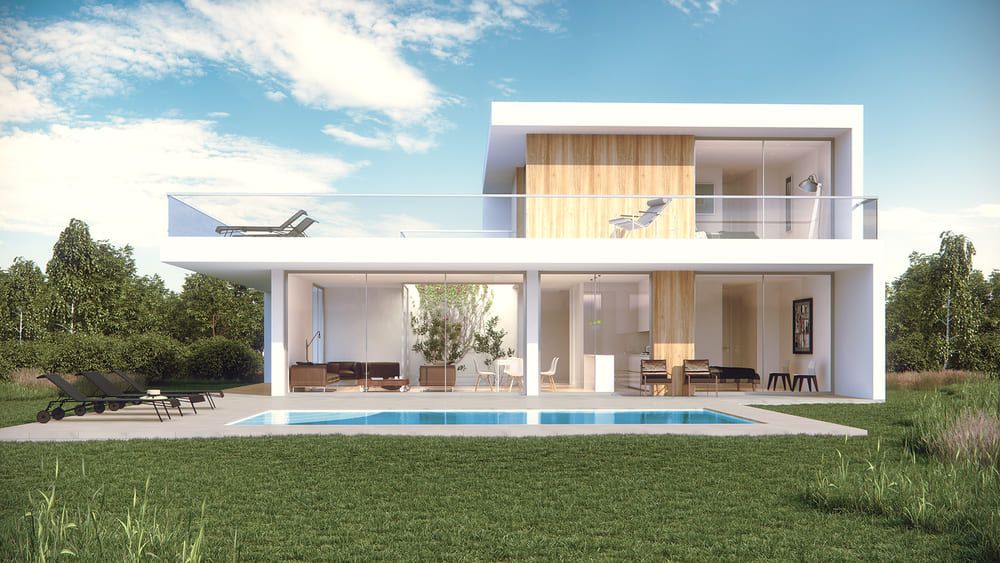
Frequently asked questions about sustainable homes
What is a sustainable house?
A sustainable house is the one designed and built with the goal of reducing their environmental impact both in the process of construction as well as in their daily functioning. These homes are based on the principles of energy efficiency, use of eco-materials and renewable energy systems to minimize their ecological footprint and promote a way of life more sustainable.
What are the benefits of living in a sustainable house?
The benefits of living in a sustainable house, which include the energy savings and coststhe reduction of the environmental impact, increased comfort and quality of life, the appreciation of the property, and the contribution to the conservation of the natural resources and the fight against climate change.
How much does it cost to build a sustainable house?
The cost of building a house sustainable can vary depending on such factors as the size and design of the home, the materials used for construction, renewable energy systems installed, and geographic location.
In comparison with a conventional house, a house, Passivhaus can reduce energy consumption in heating and cooling by approximately 70 %. Although, initially, the cost of construction can be between 15% and 20 % higher due to the importation of certain materials, long-term, this investment results in significant savings
What types of sustainable homes are there?
There are several types of sustainable homes, including passive houses, homes, bioclimatic, prefabricated homes, sustainable, and homes built with natural materials such as wood, bamboo, or raw land. Each kind of home has its own features and benefits, so it is important to choose the option that best suits the needs and preferences of each person.
What materials are used in the construction of sustainable homes?
In the construction of sustainable homes is using a wide variety of eco-friendly materials and renewable, such as wood, bamboo, raw land, cork, hemp, and recycling of demolition materials, among others. These materials are selected carefully to minimize the environmental impact of housing and promote a way of life more sustainable.
What renewable energy systems can be used in a sustainable house?
A sustainable house you can use a variety of renewable energy systems, like solar panels, solar, aerothermal, geothermal, wind, hydropower, and biomass, among others. These systems use natural sources of energy and renewable to power the various devices and systems of the home, thus reducing your dependence on non-renewable energy sources and contributing to the conservation of the environment.
How can I make my home more energy efficient?
To make a house more energy efficient, you can take several measures, such as improving insulation, installing renewable energy systems, use energy efficient appliances, adopting habits of responsible consumption, and participate in recycling programs and waste management. These measures help to reduce the energy consumption of the home and to minimize their environmental impact, while contributing to the financial savings in the long term.
What can I do to reduce my environmental impact in the home?
To reduce your environmental impact at home, you can take actions such as reducing the consumption of energy and water use products and materials that are environmentally friendly and biodegradable, recycle and reuse materials wherever possible, and participate in programs for the conservation and protection of the environment in your community. In addition, you can be educated and aware about sustainable practices and share your knowledge with other people in order to promote a style of life more respectful with the planet.
What certifications are there for sustainable homes?
There are several certifications available to assess and recognize the sustainability of a dwelling, such as LEED (Leadership in Energy and Environmental Design), BREEAM (Method of Environmental Assessment of Buildings), and Passivhaus Standard (Construction Passive), among others. These certifications establish specific criteria in areas such as energy efficiency, indoor air quality, the use of sustainable materials, and waste management, and can help the owners to demonstrate the commitment of your home with the sustainability and to obtain additional benefits such as tax incentives and public recognition.
Where can I find examples of sustainable homes?
You can find the examples of sustainable homes in books, magazines, and web sites specialized in architecture and sustainable design, as well as fairs and events on ecological construction and sustainable housing. In addition, you can search in your community and online to identify projects and local construction that serve as examples of good practice in terms of sustainability and they inspire you in your own project of sustainable construction.
What grants and subsidies exist for the construction of sustainable homes?
There are various programs of aid and grants available for the construction of sustainable homes, both the national and local level. These programs may offer low interest financing, tax incentives, subsidies for the installation of renewable energy systems, and technical assistance and training in sustainable building practices, among other benefits. To find more information on these grants and subsidies, you can consult the web pages of governmental agencies, ministries of environment, development agencies, sustainable, and non-governmental organizations dedicated to the promotion of sustainable construction.
Additional resources for sustainable homes
Links to web sites and relevant articles
- Green Building Council Spain: Organisation dedicated to promoting sustainable construction in Spain.
- Passivhaus Institut: Institute that promotes the construction standard passive worldwide.
- LEED Spain: Official website of the LEED system of certification in Spain.
- BREEAM Spain: Official website of the assessment method BREEAM in Spain.
Contact information for more information
For more information about sustainable homes and assistance programs and grants available in your area, we recommend that you contact the following agencies:
- Ministry of Ecological Transition and Demographic Challenge
- Agency of Housing and Rehabilitation of Andalusia (AVRA)
- Málaga City Council
These agencies can provide you with up to date information and guidance on how to start your project of sustainable construction and take advantage of the grants and subsidies available in your region.
Conclusions on sustainable homes
In summary, sustainable homes are an increasingly popular option for those who wish to live a more eco-friendly and responsible. These homes offer a number of benefits to both its inhabitants and the environment, as energy savings and costs, the reduction of the environmental impact, increased comfort and quality of life, and the valuation of the property.
In addition, there are numerous options available in terms of design, materials of construction, renewable energy systems and programs to help, which makes it easier than ever to build a sustainable house adapted to the needs and preferences of each person.

